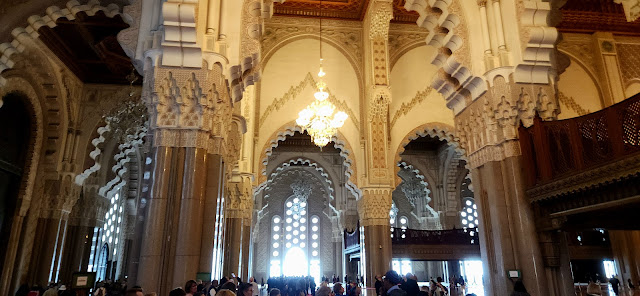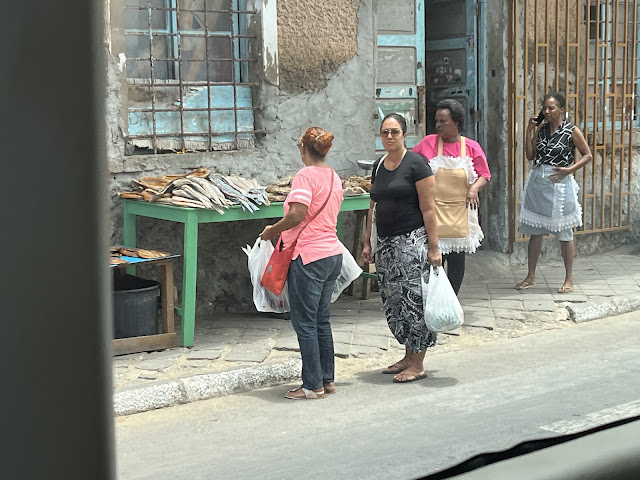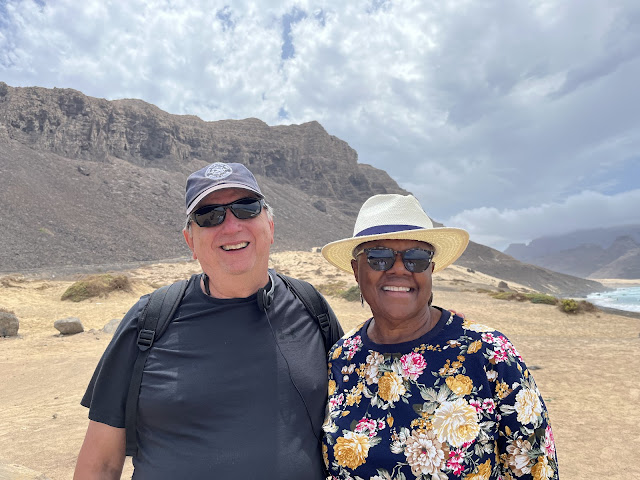May 1, 2025
A Coruna, Spain
"Outrage over property profiteering and government inaction showed its strength and mobilising power on 5 April, with 42 demonstrations demanding lower rents or the implementation of indefinite contracts, among other measures such as reclaiming empty, tourist and seasonal homes; ending speculative buying and selling; and expanding the public rental housing stock." ~ ZNetwork
At our first stop today, a lovely roadside/seaside public garden, I noticed some scrawled graffiti on the fencing.
Tourist Go Home!
What the sentiment lacks in civility, it makes up for in directness, I guess.
Our guide in A Coruna explained that just a few weeks before our visit, a crowd of 5000 had protested in the streets over the lack of affordable housing in the area. In other Spanish cities, the crowds topped 6 figures. Evidently, there is much more money to be made by renting out a condo as a vacation short term stay than as long term housing, so more property owners are doing that, squeezing out the locals.
Guess I should preface this discussion by admitting that we own 10 rental units--all nice duplexes which we maintain beautifully because when we decided rental income should be part of our retirement, we promised each other never to rent anything we wouldn't live in ourselves. We are careful to keep our rent on the low side of average for the county and two of our residents receive assistance from public housing so we keep up with those extra requirements for them. Most of our tenants stay with us for years--one couple has been with us since 2014! People need a place to live and for whatever reason, some cannot or choose not to buy their own home. We are filling a need.
That said, my sympathies are obviously with the property holders in the Spanish dispute. Whether you buy rental property for long or short term use, you are taking a risk. You are placing your asset in the hands of strangers who may abuse it or the terms of their lease. Our guide admitted that evicting a tenant for non-payment takes 2 years (during which time the landlord receives no income, yet still has expenses to pay, and their property is likely being damaged maliciously). The Spanish protestors advocate "taking back empty, tourist and seasonal homes," which I assume means squatting, and abolishing private rental ownership.
So, as you might imagine, the housing dispute and antipathy toward visitors--even those like we cruisers who take no one's home because we bring ours with us and leave nothing but our tourist dollars in shops and restaurants--left a sour taste in my mouth for the area. However, it is lovely with both natural beauty and architectural interest. I can see why it attracts so many visitors.
Hope you enjoy the DH's montage:
PS. If you've been following my blog, you know we sort of dropped off the radar for a bit. I blame a couple of things--Viking's shoddy wifi that made working with the internet a source of profound frustration, the sense that our trip was ending and we wanted to enjoy the time as much as we could, and the mental promise that I'd finish up the trip online as soon as we got home.
We've been home almost a month and (hangs head sheepishly) that hasn't happened. But lots of other things have. I'll get into that once I finish the trip here for you. There are three more stops--Honfleur, France (where we took a long tour to visited the beaches of Normandy), Dover, England, and London & a day at the famous Tower Of... Then we had a comfortable and uneventful flight back to the states, but ... well, that's another post or two or three.
More soon. No, really, I promise!
























